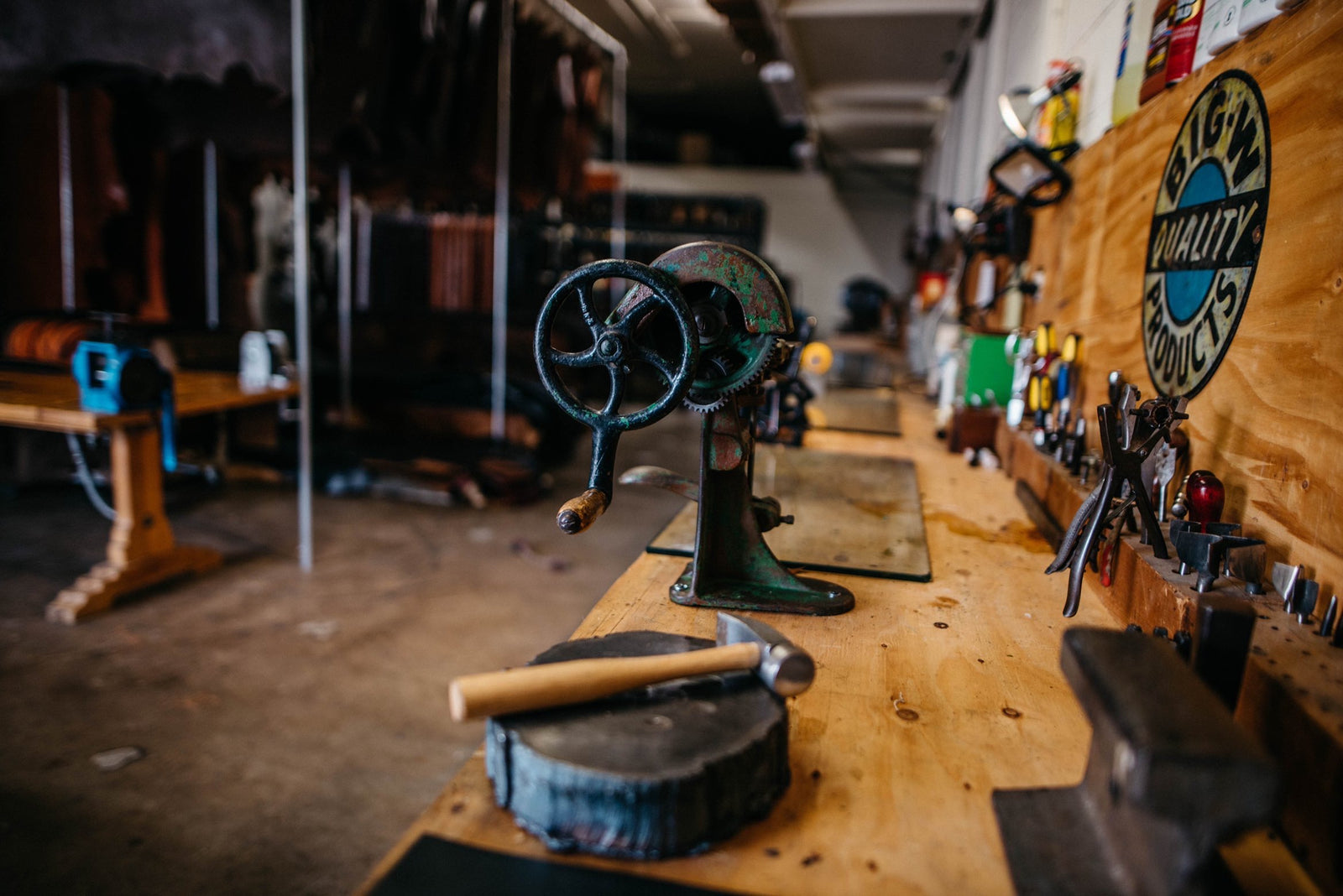Chrome Tanning vs. Vegetable Tanning
LEATHER [leth-er] noun 1.the skin of an animal, with the hair usually removed, prepared for use by tanning or a similar process designed to preserve it against decay and make it pliable or supple when dry and cured.
When the hides come off of at the meat packing facilities, the whole animal is intended to be completely utilized. The hides are then sorted and packed in refrigerated trailers bound for two different tannery options.
- The chrome tannery - NOT OUR LEATHER out of the United States)
- The vegetable tannery - OUR LEATHER
NOT OUR LEATHER
Chrome tanning is the process of using chromium sulfates and other acids and chemicals to stop decomposition and stabilize the hides. This process was invented around the mid to late 1800's. It created a way to cure leather in approximately 24 hours. Previously, traditional tanneries would take up to 8 weeks for proper leather curing. This marvel of the modern industrial age made leather less expensive and less labor intensive. However this new leather was only good for certain applications. Saddles and holsters could not come from this leather. Shoes and upholstery are still the perfect usage for this tanning process. Chrome tanned leather is strong but always void of memory and stiffness. Leather that has been chrome tanned has a great stretch ability to it which makes it ideal for pulling over shoe lasts or furniture frames.Chrome tanning has superior resistance to climate changes(temperature), weather conditions(moisture), and allowed for even absorption however, the temper of chrome tanned leather has no ability to be stiff. No matter how thick and mature the bull hides that are used, it cured in 24 hours into strong yet flimsy hides.
Turns out Chrome Tanning is more poisonous and hazardous to the environment than first thought. Once stabilized, chromium leather direct to skin is arguably and mildly toxic… as to how toxic to animals and humans is debatable. It would not be advisable to wear chrome tanned leather directly against your skin (or as harness for pets & livestock.
OUR LEATHER
Vegetable Tanning Is the process of using plant materials(tree tannins) to cure leather through PH changes from tannins found in plants and trees. This method is presumably as old as the ability of humans to make fire. The oldest known example of leather dates back 5,500 years. It was a shoe found in a cave in Armenia. It would be difficult to say how many years vegetable leather tanning practices date.
Pros
1. A naturally kinder footprint on the environment from both a process and degradable prospective.
2. A characteristic of stiffness when wet then dried/heated.
3.The ability to retain memory and shape.
4. Superior aging and patina when exposed to oxygen and skin oils.
5. A natural and non caustic nature. Continues to be used against the skin humans/livestock.
Cons
1. Not as weatherproof or durable (as chrome tanned leather).
2. A bit more expensive.
3. The inability to fully absorb multi spectrum colorants as well as show (chromium) tannages.
4. Longer to cure & labor intensive to tan. (approx. 6-8 weeks).

